28 F. high temperature on Saturday in the Twin Cities.
35 F. normal high for March 3.
32 F. high temperature a year ago, March 3, 2011.
69 F. predicted high temperature in the Twin Cities on March 18 (GFS)
2" snow on the ground in the metro area.
9" snow on the ground a year ago in the Twin Cities, on March 3, 2011
8.2" snow fell during March, 2011. Average March snowfall at KMSP
is 10.4" (no longer snowiest month of the year). Now January has that distinction.
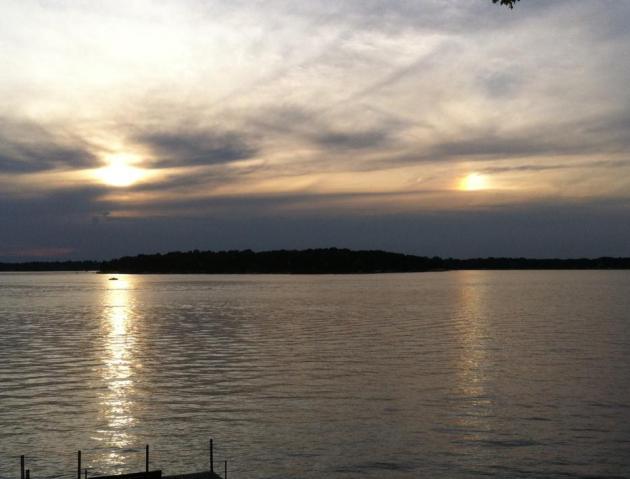 2:32
2:32. Today the sun will be out 2 hours and 32 minutes longer than it was back on December 21.
11 hours, 18 minutes of daylight today.
6:46 am sunrise in the Twin Cities. Sunset is
6:04 pm.
October 8. Today the sun overhead will be as high in the sky as it was on October 8.
101 tornadoes Friday from Mississippi to Ohio. Source: SPC, NOAA's Storm Prediction Center. Photo of tornado damage in Marysville, Indiana courtesy of Nam Y. Huh/AP).
791 separate reports of severe weather Friday (hail, straight-line winds and tornadoes).
38 tornado-related fatalities from Friday's storms. 19 in Kentucky, 14 Indiana, 1 each in Alabama and Georgia. Source: AP.
“
The Henryville, Indiana tornado (Clark County) rated an EF-4 Major Tornado – just spoke with the NWS office in Louisville. The damage surveys for other areas including Chelsea and Marysville will be tomorrow.” - Chikage Windler
"
Everyone talks about the weather, but no one does anything about it." - Mark Twain.
Sunrise-Sunset Calculator. For any city, any day of the year. I'll even throw in moonrise for now extra money. Be the envy of your friends! Details below, along with 3 other sites, part of "Paul's Links".
2nd warmest meteorological winter on record for New York City; warmest February on record. Source: NOAA. Photo: Mark Lennihan/AP.
4 out of 5 of all Americans live in areas that have been declared Federal Disaster Areas at some point since 2006.
99 Federal Disasters declared in 2011, a new USA record.
"
Public discourse has been polluted now for decades by corporate-funded disinformation – not just with climate change but with a host of health, environmental and societal threats. The implications for the planet are grim." - climate scientist Michael Mann, in a Guardian story below.
"
A warming climate will only add to this trend of increasing losses, which is why action is needed now," said Mark Way, head of Swiss Re's sustainability and climate change activities in the Americas, who spoke at yesterday's press conference". - from a Huffington Post article below.
In Full Bloom, 30-45 Days Early. "
Snow drops in Central Park in New York, Feb. 24, 2012. Horticulturalists in the Bronx call it the global-warming garden, and in a winter notable for its consistent mildness, it is hardly unusual. (Suzanne DeChillo/The New York Times)."
2011-2012: New York's Second Warmest Winter In History; Warmest February Ever.
The Huffington Post has more specifics: "
Yup, it's official: February was the warmest New York February since people started keeping track back in 1870. At a balmy average of 40.9 degrees, this February ties the 1984 record and caps off a remarkably warm three months, the "second warmest climatological winter on record, trailing only 2001-02," according to Gothamist. By contrast, the coldest February occurred in 1934, when temperatures averaged only 19.9 degrees, a staggering 21 degree difference."
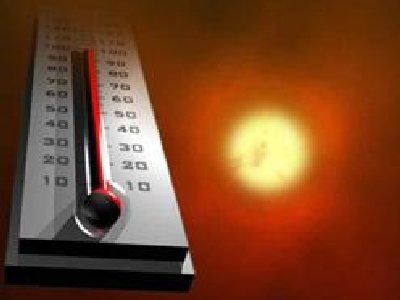 324
324 months in a row. February was the 324th consecutive month of global temperatures above the 20th century average. Source: NOAA NCDC.
Incomprehensible Damage. Tens of thousands of Americans were impacted by Friday's severe storms: "
Janet Elliott stands in her damaged kitchen after a tornado struck her home in Harrison, Tenn. on Saturday, March 3, 2012. Massive thunderstorms, predicted by forecasters for days, threw off dozens of tornadoes as they raced Friday from the Gulf Coast to the Great Lakes. Twisters crushed blocks of homes, knocked out cellphones and landlines, ripped power lines from broken poles and tossed cars, school buses and tractor-trailers onto roads made impassable by debris. (AP Photo/Billy Weeks)."
Amazing Tornado Outbreak For Early March. At last count (still a preliminary number)
SPC counted 101 separate tornadoes on Friday from southern Mississippi to southwestern Ohio, a few of these were undoubtedly large, EF-3 and EF-4 tornadoes. This is somewhat typical for mid April or early May, but unusual for an outbreak of this size, aerial extent and ferocity coming in early March.
Eerily Similar. Check out the remarkable similarities between the tornado warnings (red) and severe storm warnings (blue) from Friday's outbreak with the deadly outbreak on April 27-28, 2011. I keep saying that Friday's outbreak was more typical for late April, and this comparison seems to prove that claim. Graphic courtesy of SPC.
Swarms Of Storms. NSSL, the National Severe Storms Lab in Norman, Oklahoma, created a map that summarizes the tracks of Friday's supercell, tornado-producing thunderstorms. This was done using an algorithm to calculate 2-D rotation tracks. What stands out to me is the "clumping" of tracks - many locations being hit by
multiple, rotating, mesocyclones capable of tornadoes.
Toddler Found In Field 10 Miles Away From Family's Home After Tornado.
CBS Cleveland has the story of what can only be called a modern-day miracle. The child is still in critical condition; a lot of people praying very hard for a full recovery. "
A hospital spokeswoman says a 2-year-old girl found alive in an Indiana field after violent storms is the sole survivor of her immediate family. Cis Gruebbel is a spokeswoman for Kosair Children’s Hospital in Louisville, Ky. She said Saturday that the girl’s mother, father, 2-month-old sister and 3-year-old brother all died Friday when the storms devastated southern Indiana. Gruebbel says the toddler is in critical condition. She would not identify the child and says she could not provide details on the child’s ordeal. She says extended family members are at the hospital with the child."
2012 (229) * 2011 (1709) 2010 (1282)
Tornado Nation. America experiences more tornadoes than any other nation on Earth. Why? It's a function of our geography. The same features that make our nation spectacularly beautiful can result in extreme contrasts in temperature and moisture. Throw in an unstable airmass and high winds howling high overhead, and you can brew up the atmospheric ingredients necessary for tornadoes. The
Storm Prediction Center maps above show locations of tornado touchdowns for 2010, 2011 and 2012 (as of February 29).
The map in the upper left does not reflect Friday's major outbreak. According to SPC the 3-year average for tornado touchdowns in the USA is 1382; the long-term average is closer to 1,000 tornadoes/year. Are we really seeing more tornadoes, or doing a better job of spotting the tornadoes that have always been there. Or both? There is some controversy in the meteorological community, but my perception is that, even though we have new and better tools to spot and track tornadoes (including Dual Polarization Doppler and well-trained storm spotters and chasers) something else is going on - that we may be, in fact, experiencing an uptick in tornadoes.
* preliminary number.
"Like A Bomb Dropped From The Sky". Thanks to photographer Greg Pursifull from CN2, who sent back this photo from Morgan County, Kentucky.
Red Cross Launches Huge Tornado Relief Effort. From the
Red Cross: "
Friday night, the Red Cross opened or supported 22 shelters in Missouri, Illinois, Kentucky, Oklahoma, North Carolina, Alabama, Indiana, Ohio, Tennessee, Virginia and West Virginia. Across the affected states, trained Red Cross disaster workers are mobilizing to begin feeding operations and distribution of relief supplies. Red Cross health services and mental health workers also will be out in neighborhoods help people cope with what they’ve seen and experienced. And damage assessment teams will also help the Red Cross and our partners discover the full scope of the damage."
Huge Mobilization Effort. Click
here to see the Kentucky National Guard's photostream, courtesy of Flickr, and get a greater appreciation for the clean-up effort now underway: "
Kentucky Guardsman Staff Sgt. Joshua Matlock, with the Charlie Battery, 1st Battalion, 623rd Field Artillery (HIMARS), accompanies Kentucky's Lt. Gov. Jerry Abramson as they view the debris that covered the area of East Bernstadt Ky. Mar. 3. (Photo by Spc. Brandy Mort, 133rd Mobile Public Affairs Detachment)."
March The Way It Was Meant To Be? Call me crazy, but I still find snow in early March reasurring. Meteorologist Todd Nelson snapped this shot up at Lutsen on Saturday - still plenty of snow for skiing and snowboarding up north.
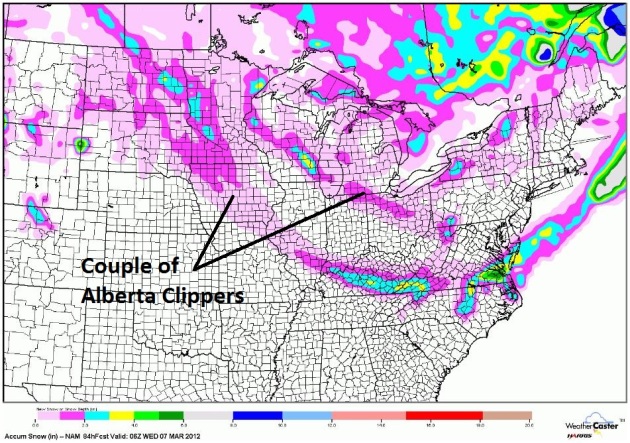 Couple of Feeble Clippers
Couple of Feeble Clippers. The pattern isn't ripe for accumulating snow anytime soon (looking out 2 weeks). A weak clipper may squeeze out a dusting or coating of flurries today in the metro, a better chance of a quick inch, maybe 2", over southwestern Minnesota.
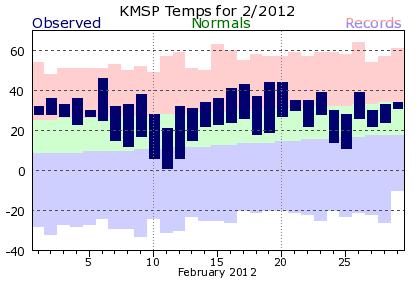 February: What Happened To "Normal"
February: What Happened To "Normal". The normal high/low range is the green-shaded area above. As you can see, February temperatures were consistently warmer than average in the Twin Cities. Only 5 nights saw lows colder than average. More from the local office of the
National Weather Service: "February of 2012 continued one trend that has been in place since this past summer and that is continued above normal temperatures. As with December and January, February featured yet another month this winter where the entire area saw temperatures between 4 and 8 degrees above normal. One trend that did end (in February) was that of experiencing below normal precipitation. A very wet storm at the end of the month saw most locations nearly double the normal precipitation observed in February in just 2 days. However, much of the precipitation that did fall (last) month came in the form of rain, which resulted in February having below normal snowfall for all but northern sections of the Chanhassen forecast area (central MN and northwest WI).
February marked the first time since July that the Twin Cities had above normal precipitation for a month.
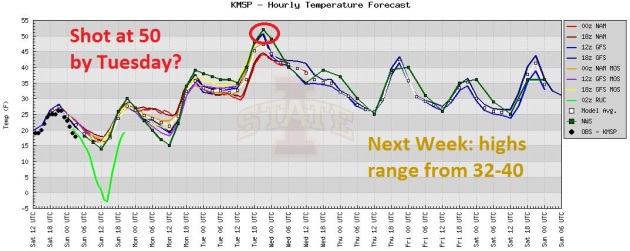 Outlook: Rapid Meltdown
Outlook: Rapid Meltdown. If you like snow (and who among us doesn't?) get out and take a few photos - it'll be pretty much gone by next Tuesday as highs surge into the 40s to near 50. Nothing approximating a "cold front" in sight.
Third Week Of March: 60s, Shot At 70? Well, we won't be seeing any significant snow anytime soon. For that to happen 850 mb temperatures (4,000 feet) need to be colder than 0 C. (32 F). Those (GFS) temperatures are forecast to be +6 C to +12 C from March 11-19.
First Severe Outbreak For Minnesota? Pure speculation this far out - but long-range GFS guidance shows upper level winds (finally) howling form Texas by February 19 (pictured above), which could translate into significant rain, even T-storms, a few of which could be severe close to home by the 3rd week of March. I stand by my hunch: severe storm season will come to Minnesota a few weeks earlier than usual this year.
Paul's Links. I've gotten a number of request to share some of my (super-secret) web sites, the trusted sources I turn to for raw weather data, current conditions, weather models, etc. So for the next few weeks (until I run out) I'm going to go down my Firefox browser list, in no particular order. I hope a few of these are bookmark-worthy:
1).
Minnesota Climate Summary. This is the go-to URL for climate information for MSP and every other reporting station in Minnesota. Click on "CLIMSP" to get Twin Cities data, but all other major Minnesota cities are included. Data courtesy of NOAA.
2).
National High and Low Temperatures. If you're looking for that day's extremes this is the site to check out, courtesy of NOAA NCEP. The latest data usually arrives by 7 pm every day.
3).
Recent Snowfall and Snow Depth Maps. NOAA has a wealth of information online, including this site that shows recent snowfall for the last 24 hours, or up to 7 days in the past. OK. I'll try to remember to post 3 new sites every day until I run out of ammunition. How much time do you have?
Sunrise - Sunset - Moonrise Times. If you're serious about fishing (and a few Minnesotans are), or just need a specific time to calculate your sunset wedding come June, check out sunrisesunset.com. All your celestial needs in one handy site.
Frontline: Inside Japan's Nuclear Meltdown. Parts of Japan are uninhabitable, and will be for decades, the result of last year's severe earthquake and tsunami, that claimed over 20,000 lives. An incredible PBS
Frontline documentary reveals the stark truth: the world came very close to a total meltdown of 6 reactors and 7 nuclear fuel pools that would have forced the evacuation of Tokyo (and 90,000 Americans and their dependents). The (former) Prime Minister of Japan, in a very bold move, ordered TEPCO nuclear workers not to evacuate the Fukushima Nuclear Plant. They remained on-site, forcing water onto the smoldering ruins of the reactors, preventing a total meltdown in the process. This runs 53 minutes, but it's a compelling look at just how close we came to the world's worst nuclear catastrophe.
Apple's TV Dream Revealed: Embarrass Hardware Makers, Stiff Content Providers, Destroy Cable Companies. Not sure how much of this is real, but
businessinsider.com has a potentially revealing peek at iScreen, or iTV, or iWhatever: Over the last several months, Apple's vision for television has become clearer. Thanks to work by Wall Street analyst
Gene Munster on the hardware side and the New York Post's Claire Atkinson on the content and cable side, we now have a pretty good picture of what
Apple wants to do:
- Build a TV set that is much cooler and easier to use than anything else out there
- Charge twice as much for it
- Assemble a "virtual cable company" with boatloads of great content by cutting deals with content providers
Where Do Good Ideas Comes From? I don't know, goodideas.com? I give up. Steve Johnson has some intriguing ideas in his new book, highlighted at this link, courtesy of
brainpickings.org: "
We’re big fans of the RSA. Their latest gem animates one of the most important questions in creative culture: Where do good ideas come from? Steven Johnson tackles the grand question with insights from his latest book and a historical perspective on innovation throughout human civilization."
 Taking The Long View: How Amazon's Jeff Bezos Owes Much Of His Success To His Ability To Look Beyond The Short-Term View Of Things
Taking The Long View: How Amazon's Jeff Bezos Owes Much Of His Success To His Ability To Look Beyond The Short-Term View Of Things. A fascinating article from
The Economist: "
INSIDE a remote mountain in Texas, a gargantuan clock is being pieced together, capable of telling the time for the next 10,000 years. Once the clock is finished, people willing to make the difficult trek will be able to visit the vast chamber housing it, along with displays marking various anniversaries of its operation. On a website set up to track the progress of this “10,000-year clock”, Jeff Bezos, who has invested $42m of his own money in the project, describes this impressive feat of engineering as “an icon for long-term thinking”. Photo above courtesy of
zimbio.com.
 Daydreaming Of Summer
Daydreaming Of Summer. Yep, many of us are dreaming of spring break, a quick getaway, getting a little vitamin D into our bodies. My wife of 28 years and I just got back from a wonderful week at
Boca Grande, Florida, on a barrier island about 1 hour south of Sarasota. You pay a $5 toll and cross a causeway from the mainland, over 3 little bridges, onto this lush peninsula of land between the Intercoastal Waterway and the Gulf of Mexico. It was pretty incredible: deep sea fishing (tarpon), dophin-watching and (reluctant) shopping in a relaxing little village with no traffic lights, not even a gas station, and some of the most incredible, picture-perfect Technicolor Sunsets I've ever witnessed in my 53 years on this planet. White sugar sand, as good as Lido Beach or Siesta Key in my humble opinion. I snapped the photo above on Thursday, when the high was a balmy 85, unusually warm for early March, even in Florida.
Seaside, Florida: Cars Optional - Walking/Biking Encouraged. The week before I was studying tropical weather patterns at
Seaside, a "new urbanist" village on the Florida Panhandle, between Destin and Panama City Beach. Cars were truly optional: small cottages close together, with the ability to walk to shops and restaurants. This was the town featured in the Jim Carrey movie, "The Truman Show". Equally charming, with plenty to explore (the town of
Rosemary Beach would have looked right at home in France or Belgium). Again, great beaches, more nightlife than Boca Grande (if I was 30 years younger that might be relevant), but also 10-20 degrees cooler. That's the thing about The Emerald Coast of the Florida Panhandle: it's terrific, but you can't count on warm, sun-drenched weather in late February, like you usually can in Sarasota, Ft. Myers or Naples. Then again traffic is a lot easier too - not nearly as much stop and go driving to worry about.
* photo above is from Boca Grande, where we rented a place at
vrbo.com (where I have never been disappointed). It must be nice to actually own a place in Florida, but not having to worry about renters, taxes, insurance (and hurricanes) counts for something.No, the sun hasn't gone to my head - the weather blog isn't mutating into a tired travelogue. My wife and I set out to find two quiet (sane), relatively affordable and undiscovered areas of Florida that might appeal to us. Is there a "perfect spot" left in Florida that hasn't been overdeveloped or condominium-ized? My (highly subjective) conclusion: Seaside and the Florida Panhandle was
more interesting - more stuff to do and see, but Boca Grande was
more relaxing, more isolated and private. Sarasota was nearby (if you wanted to brave traffic and explore shopping and night life), but I can't imagine a better Florida retreat. If you really want to get off the grid and sink your toes into hot, white (perfect) sugar sand for a few days you might want to check out "Boca" one of these days. You won't regret it. And no, I don't get a spiff from the Chamber of Commerce. I should be so lucky...
Save 40-60% On Car Rentals. I'm starting to sound like the Geico gecko, but I found a very helpful web site that searches for the lowest car rental rates available, sort of like kayak.com for cars. It's called
autoslash.com. I rented a car for 2 weeks in Florida and spent 40% of what I would have spent going directly to one of the Big 3 car rental agencies. It works, and if you're serious about saving money on your next vacation you might want to check it out.

 Shocking News: A Cooler-Than-Average Day.
Shocking News: A Cooler-Than-Average Day. Those clouds and flurries kept temperatures a few degrees cooler than average across most of Minnesota, Saturday highs ranging from 16 at Alexandria to 25 St. Cloud, 27 in the Twin Cities and 29 at Eau Clairie. It was only the third day of below average temperatures at MSP since February 11. Just over half an inch of snow fell in the Twin Cities; 7" reported on the ground at St. Cloud.
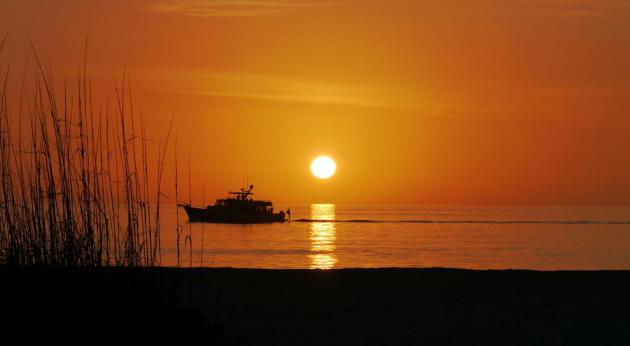 Paul's Conservation Minnesota Outlook for the Twin Cities and all of Minnesota:
TODAY
Paul's Conservation Minnesota Outlook for the Twin Cities and all of Minnesota:
TODAY: Mostly cloudy with flurries. 1"+ southwest MN. Winds: N 7-12. High: near 30
SUNDAY NIGHT: Flurries taper, seasonably chilly. Low: 18
MONDAY: Partly sunny, turning breezy and milder. High: 39
TUESDAY: Metro meltdown. Touch of April. High: near 50 (mid to upper 40s north metro, where snow will take longer to melt).
WEDNESDAY: Cloudy, cooler. Light (rain) showers possible. Low: 33. High: 37
THURSDAY: Some sun, quite pleasant. Low: 27. High: 42
FRIDAY: Mix of clouds and sun, storm-free. Low: 22. High: 36
SATURDAY: Breezy and milder again with plenty of sun. Low: 25. High: 41
What Is Going On?
I'm temporarily speechless. A speechless meteorologist? Oxymoron. I'm watching tornado coverage on CNN, scanning the SPC web site. 101 tornadoes on Friday. Unusual, even for late April.
If I didn't know better I'd say Mother Nature is having a loud, violent nervous breakdown. America's weather has always been severe but this is awe-inspiring, and very sad. The Symphony of Seasons is playing wildly out of tune; a Beethoven Concerto with a rap-funk beat. Not. Right.
Suddenly the weather maps make no sense. Mile-wide tornadoes, epic floods, drought; flowers already in bloom in New England? We'll see 50 by Tuesday here in the Twin Cities metro; the GFS hints at highs near 70 by mid-March. We seem to have skipped a month. Maybe two.
A warmer atmosphere holds more water, more fuel for storms. 2010 was Minnesota's wettest year on record. We also saw 145 tornadoes. Coincidence? I don't think so.
Uh oh, I feel a climate change lecture coming on. Spare us a Sunday Sermon, Paul. Why remind us? Because, after looking at the data and listening very carefully to peer-reviewed climate scientists (not blustery radio talk show hosts) climate change will almost certainly be one of the 3 big stories of the 21st century. Because someday your grandkids may come up and ask what you knew....when... and what you did about it.
Outbreaks of bizarre weather are a symptom - our atmosphere is running a slight, low-grade fever. If you're not at all concerned you're not paying attention.
Photo credit above: "Debris from homes and trees litter the path of Friday's tornado in Henryville, Ind. on Saturday, March 3, 2012. Severe storms, predicted by forecasters for days, killed dozens of people in five states - Alabama, Georgia, Indiana, Kentucky and Ohio. (AP Photo/Michael Conroy)."
Climate Stories...
Americans Get It: Global Warming Is Poisoning Our Weather. Poison is a strong word - I still prefer the "weather on steroids" metaphor. We've always had severe storms, but having a warmer, wetter atmosphere floating overhead increases the fundamental odds of wild weather. The story from
Think Progress: "
Killer tornadoes are marking the transition from a freakishly warm winter into yet another freakishly dangerous spring. The multi-billion-dollar drought in Texas and Oklahoma is expected to continue into the indefinite future. Planting seasons, maple syrup seasons, and cherry blossom festivals are starting at weirder and weirder times. Torrential rains and record heat waves are becoming commonplace. Migrating birds are straying from their normal path, insect pests are multiplying, and trees are dying. Americans are starting to trust the evidence of their own senses about the growing impacts of climate change, instead of the barrage of misinformation and confusion that comes from media sources."
Why The Global Warming Skeptics Are Wrong. If you read one story about the (manufactured) controversy over climate change, read this essay from William Nordhaus at the
New York Review Of Books. Here's an excerpt: "
One might argue that there are many uncertainties here, and we should wait until the uncertainties are resolved. Yes, there are many uncertainties. That does not imply that action should be delayed. Indeed, my experience in studying this subject for many years is that we have discovered more puzzles and greater uncertainties as researchers dig deeper into the field. There are continuing major questions about the future of the great ice sheets of Greenland and West Antarctica; the thawing of vast deposits of frozen methane; changes in the circulation patterns of the North Atlantic; the potential for runaway warming; and the impacts of ocean carbonization and acidification. Moreover, our economic models have great difficulties incorporating these major geophysical changes and their impacts in a reliable manner. Policies implemented today serve as a hedge against unsuspected future dangers that suddenly emerge to threaten our economies or environment. So, if anything, the uncertainties would point to a more rather than less forceful policy—and one starting sooner rather than later—to slow climate change."
Insurers Brace For Stormy Weather As World Warms.
Huffington Post has the article; here's an excerpt: "
Perhaps no industry better understands the impact of global warming than the insurance industry whose job it is to analyze risk," Sanders said. "I am pleased leaders in that industry are speaking out about the need to reverse global warming." Added Whitehouse, "Extreme weather events, like Rhode Island's historic floods in 2010, can result in the loss of homes, livelihoods, and even lives. These extreme events fit a pattern predicted by climate scientists, and we should take action now to minimize the damage that carbon pollution is causing to our country and our world."
Death Threats, Intimidation And Abuse: Climate Scientist Michael Mann Counts The Costs Of Honesty. The U.K.
Guardian has the story: "
Among the tactics used against Mann were the theft and publication, in 2009, of emails he had exchanged with climate scientist Professor Phil Jones of East Anglia University. Selected, distorted versions of these emails were then published on the internet in order to undermine UN climate talks due to begin in Copenhagen a few weeks later. These negotiations ended in failure. The use of those emails to kill off the climate talks was "a crime against humanity, a crime against the planet," says Mann, a scientist at Penn State University. Mann became a target of climate deniers' hate because his research revealed there has been a recent increase of almost 1°C across the globe, a rise that was unprecedented "during at least the last 1,000 years" and which has been linked to rising emissions of carbon dioxide from cars, factories and power plants."

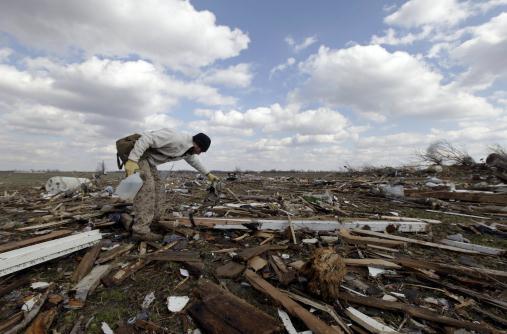
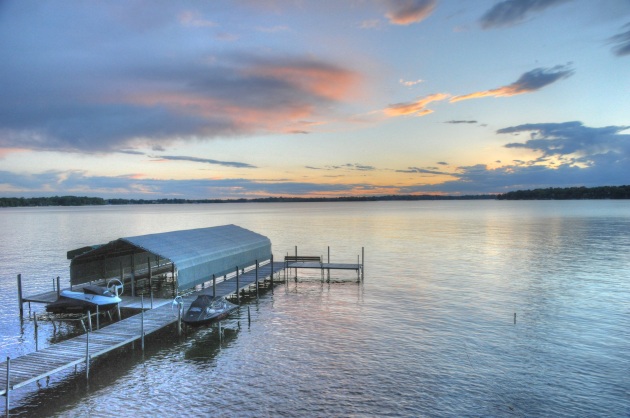


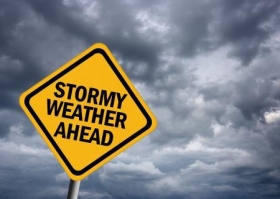
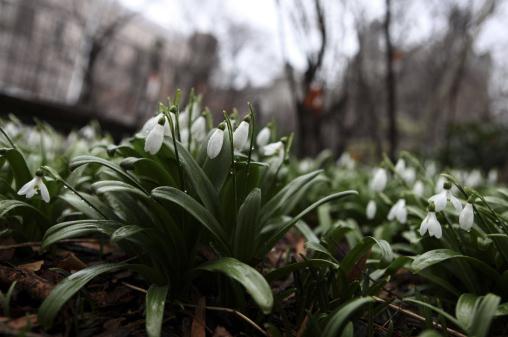

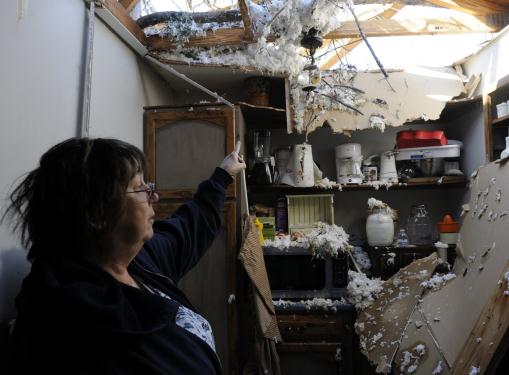
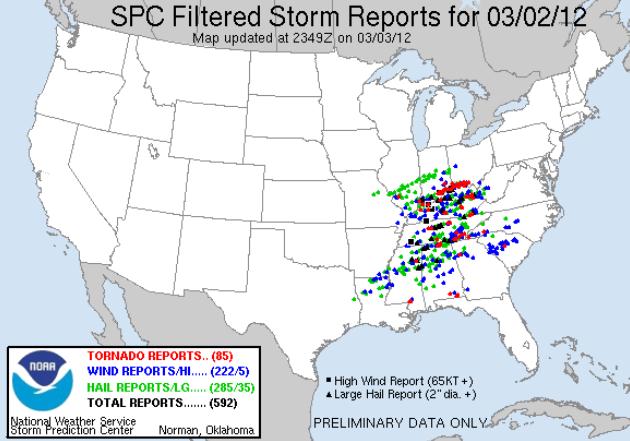
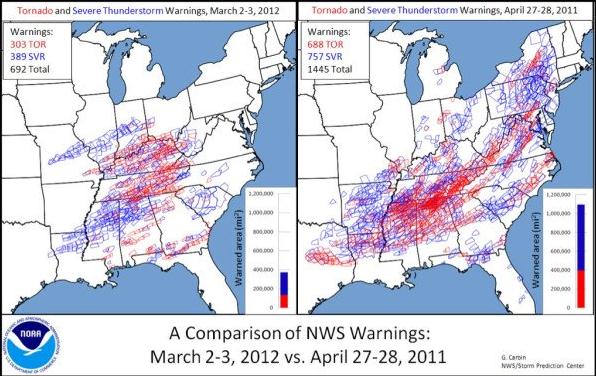
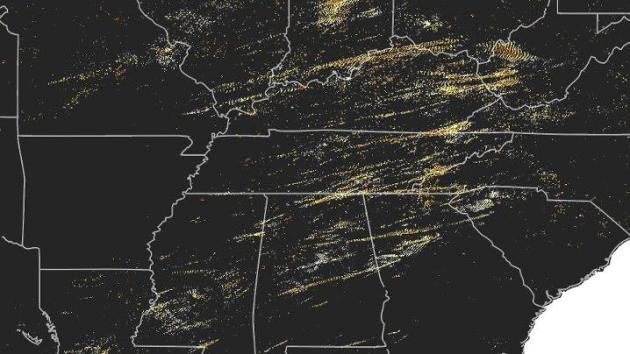
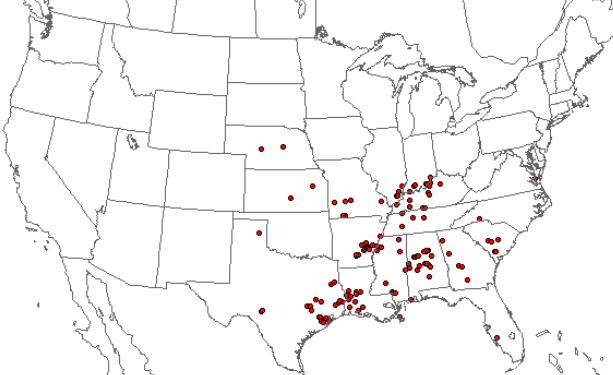
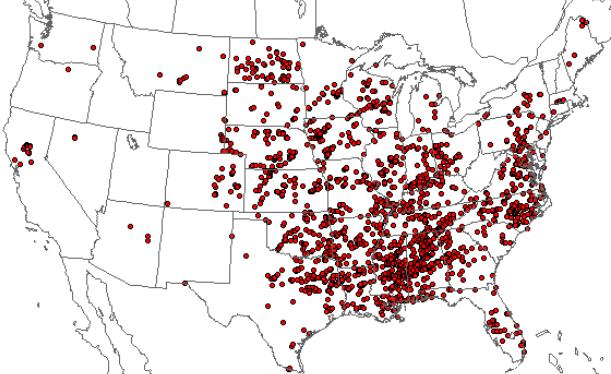
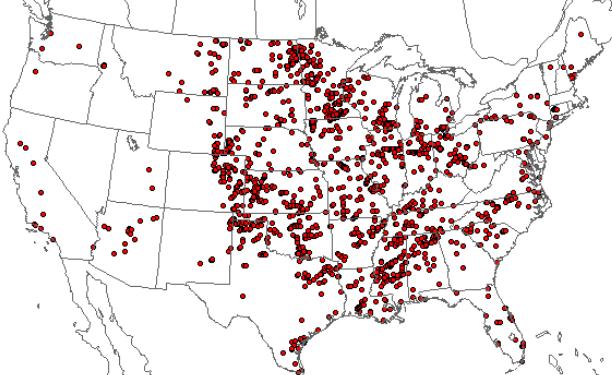
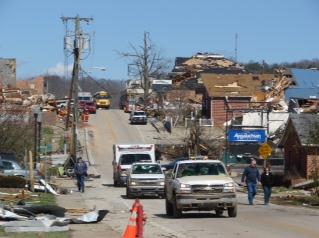

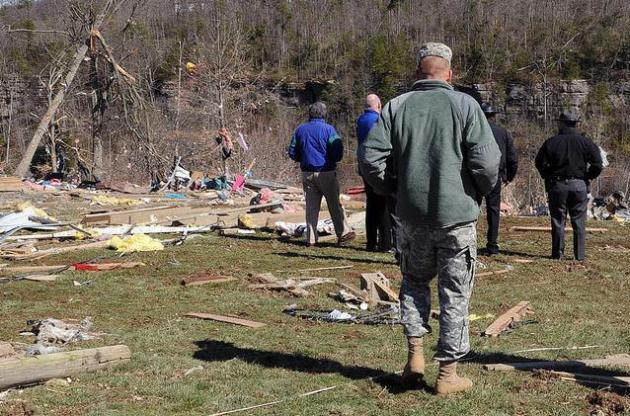
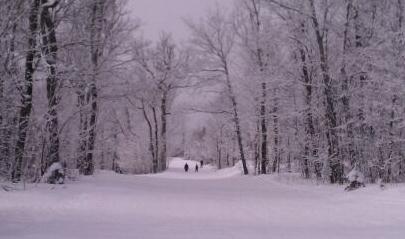




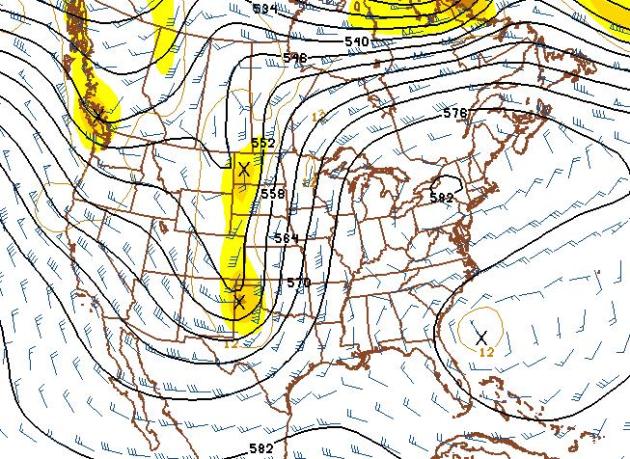
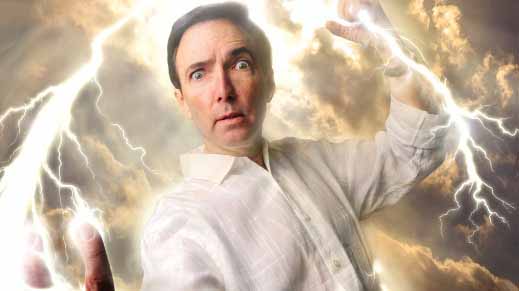

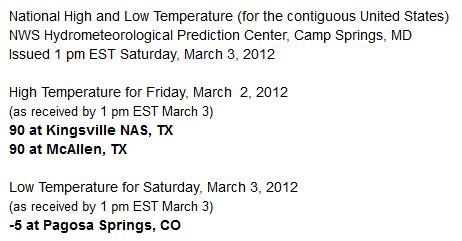
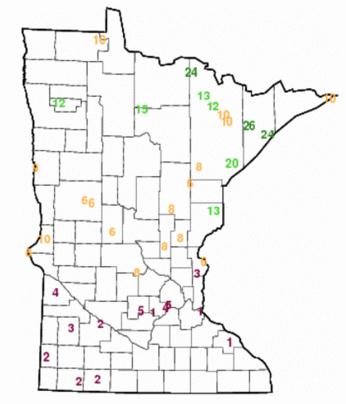

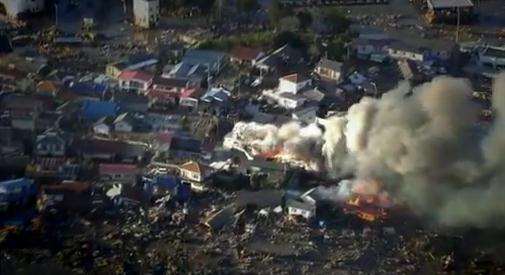




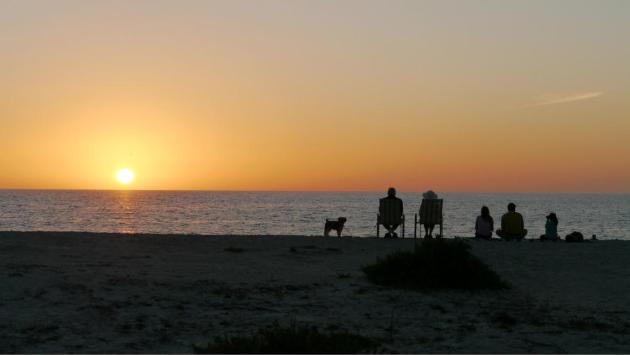
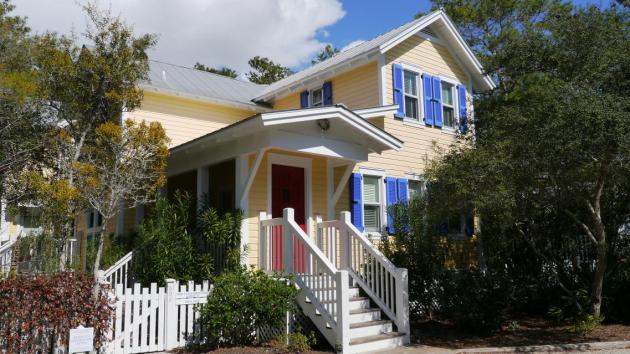




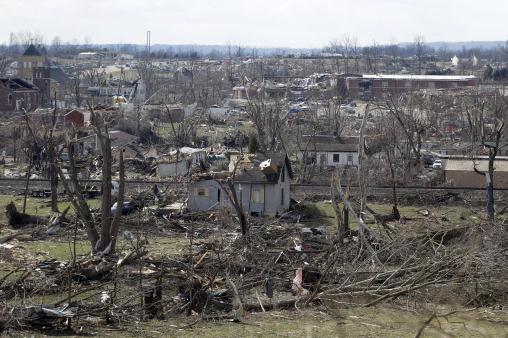
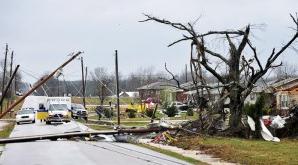
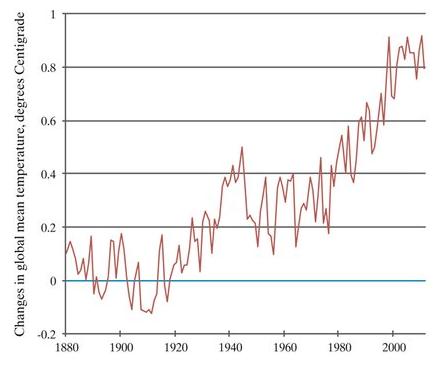
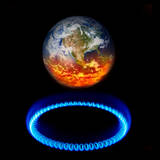
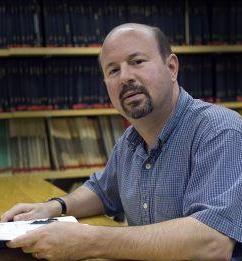
No comments:
Post a Comment